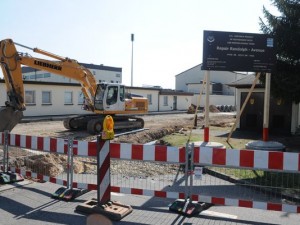
Base facilities deteriorating under budget squeeze
Facilities on military installations are deteriorating at an ever-increasing rate, a visible result of ongoing budget constraints, service installation officials told lawmakers Wednesday.
“Our facilities are degrading and our maintenance backlog is increasing,” said Erin Kern, director of the Navy’s Shore Readiness Division, at a hearing of the Senate Appropriations Committee’s military construction panel. “We understand this backlog must eventually be addressed, but we think we can’t afford to do so at this time.”
The Army “is at a critical point in installation readiness,” said Lt. Gen. David Halverson, commanding general of that service’s Installation Management Command.
The budget caps known as sequestration are affecting the Army’s ability to provide facilities that soldiers and their families rely and depend on to sustain readiness and maintain their quality of life, Halverson said, with the Army’s military construction budget request for next year focusing only on “minimum essential requirements.”
The Navy’s fiscal 2016 budget request reflects the service’s efforts to prioritize funding to address life, health and safety issues, and to repair the most essential components of critical facilities, Kern said.
Budget constraints in recent years have forced the Navy to reduce funding for infrastructure in order to preserve the operational readiness of the fleet, she said, creating a cumulative effect that has many shore facilities “degrading at an accelerated rate.”
If the Navy faces the return of sequestration in 2016, she said, the problems will only get worse, she said: “We’ll run a greater risk of mishaps, serious injury and health hazards to personnel.”
“With sequestration and tighter budgets, I’m worried that we have a problem on the horizon,” said Sen. Tom Udall, D-New Mexico. “At bases where maintenance has been deferred and construction projects have been put on hold, there are looming shortfalls.”
He pointed to White Sands Missile Range in his own state, where roads and facilities are showing signs of age and deterioration.
“I’m concerned the testing capability of White Sands will be impacted if we don’t get a handle on this issue soon,” Udall said, noting that the backlog of maintenance at the missile range is about $200 million, and about $3 billion for the Army overall.
The fiscal 2016 Army military construction budget request “supports a regionally engaged Army in a fiscally constrained environment … anything less puts our army at an unacceptable level of risk,” Halverson said.
The Army’s request for $1.6 billion for military construction and family housing would be a 26 percent increase over this fiscal year, but would represent a 33 percent reduction from fiscal 2014 and a 55 percent reduction from fiscal 2013, he said.
The other services are feeling similarly pinches. David Clifton, deputy commander of Marine Corps Installations Command, said that under current budget trends, by fiscal 2020 Marines will occupy “over 2,500 inadequate base buildings with insufficient and failing systems.”
Although the Corps’ military construction request for next year also would be an increase over this year, it would not be enough to prevent accelerated deterioration of over 12,000 buildings, range complexes, barracks and air fields, Clifton said.
The fiscal 2016 budget request is prioritized to support training operations, new weapons systems, and force presence, he said.
A backlog of repair and maintenance has contributed to the degradation of the Air Force’s combat support capabilities, said Brig. Gen. Timothy Green, that service’s director of civil engineers and deputy chief of staff for logistics, installations and mission support.
Even with a slight budget increase next year, Green said the Air Force would remain stressed to meet the current national defense strategy.





Leave a Reply